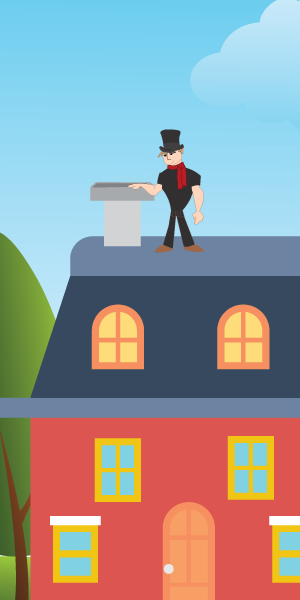
Why Your Chimney Might Smell Badly This Summer
If visitors somehow managed to stroll into your home right now, what’s the main thing you think they’d take note of? Maybe the scent radiating from your chimney was what crossed your mind; if so, don’t panic. This is a typical event for some property holders, one that is particularly predominant amid the hotter summer months. The uplifting news is help is close at hand. The experts from Chimney Sweeps West are here to help you.
Why Does My Chimney Smell So Bad?
The appropriate response here is a truly direct one: creosote. If you happened to depended intensely on your chimney this past winter and maybe utilized more wood than you’d at first arranged (some of which would not have been properly prepared), creosote could have buildup on the inward walls of your fireplace’s chimney. These deposits, when joined with the additional water in the air that is noticeable all around this season of year, can emanate a completely disagreeable fragrance. Perhaps you’ve been thinking about whether you’re the main individual who needs to manage this issue, we hope you can discover some comfort in realizing this is a typical occurrence that chimney clients have been managing for quite a long time! It’s part of the long term care that goes into your chimney.

How Do I Rid My Home of These Smells?
Creosote odors tend to linger. They saturate your smokestack’s permeable stone work and never seem to dissipate. In any case, you can try to treat the issue to help prevent yourself, your family, and your visitors from being driven out by the stench. The professional crew at Chimney Sweeps West can come out, investigate your chimney to guarantee that the main issue is the creosote, and clear out the deposits causing the odor. Having your chimney cleaned every year is a flat out must on the off chance that you intend to make full utilization of your chimney when the climate turns icy!
An Additional Consideration for You
Perhaps you’ve had your fireplace legitimately cleaned and yet have found scents every now and then, you could likewise be having a draft issue. The dominant part of older fireplaces were built with throat-mount dampers. Their metal-on-metal construction is their downfall with regards to keeping the odor inside the fireplace. Since they can’t be completely closed when the chimney is not being used, some scent can be smelled through the opening (regardless of how little it might show up) as outside air is constrained down your smokestack. Since there’s no fire going in the chimney to make an updraft, the air has an easier time moving into your home.
As should be obvious, chimney clients around the globe battle with rancid smokestacks, particularly amid the summer months. The professionals here at Chimney Sweeps West are here to help moderate this issue (and in addition whatever other issues you may have) for you. We urge you to get in touch with us at your soonest accommodation to plan an appointment so you can come back to making the most of your scent free living space.








